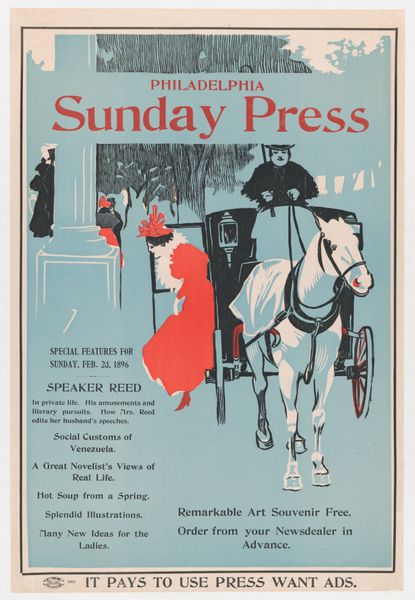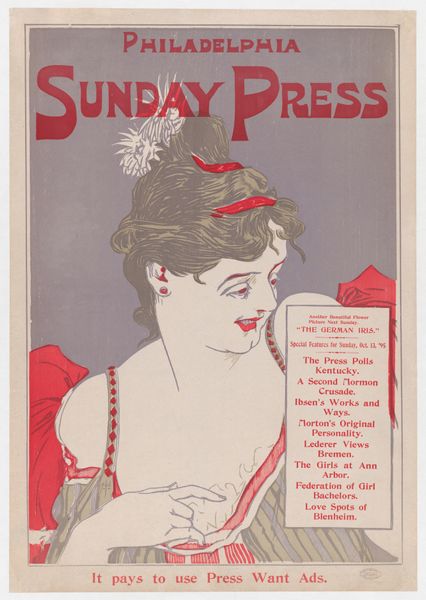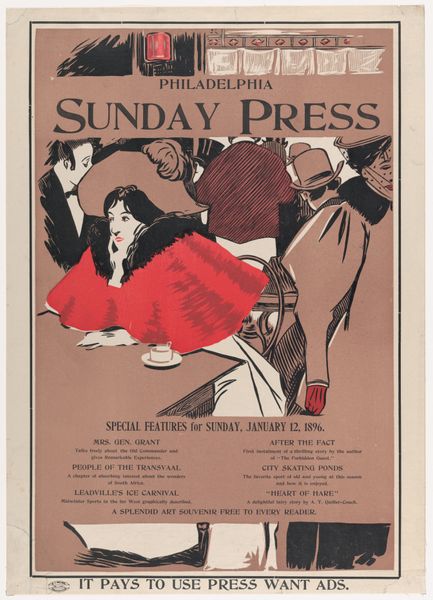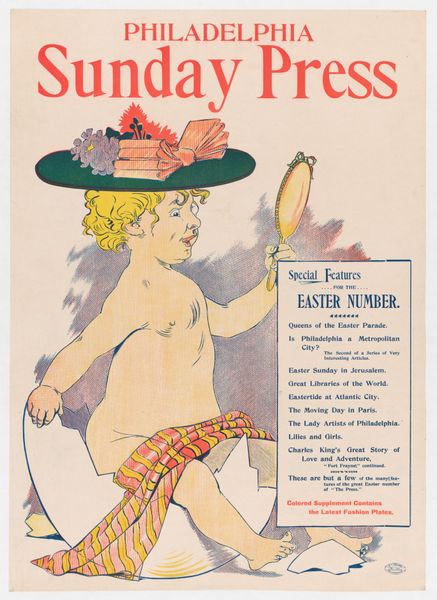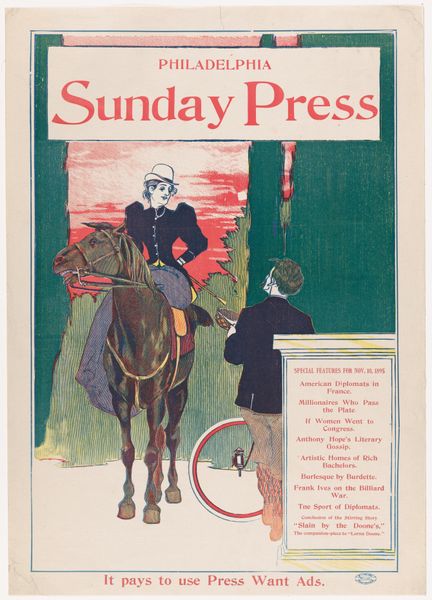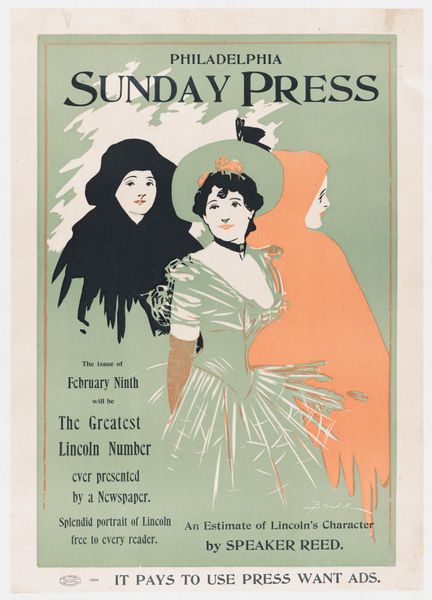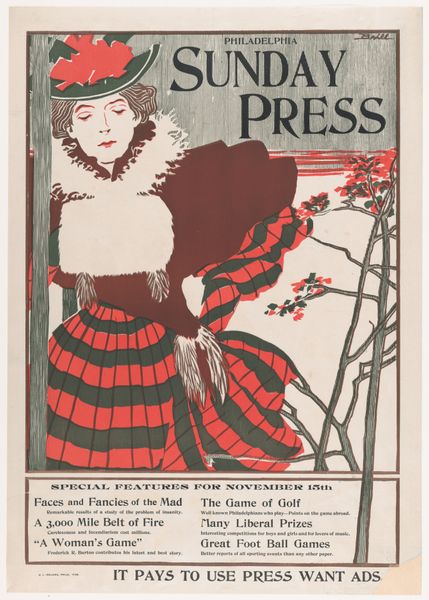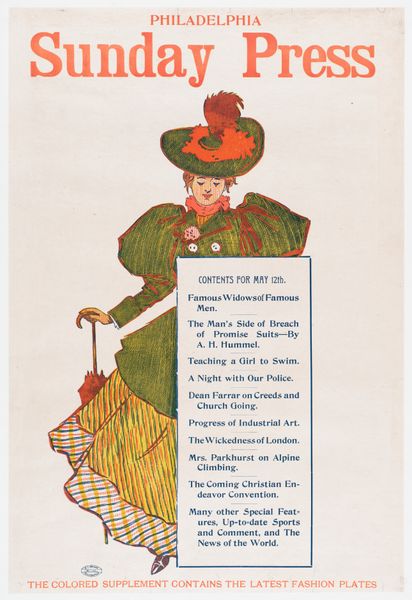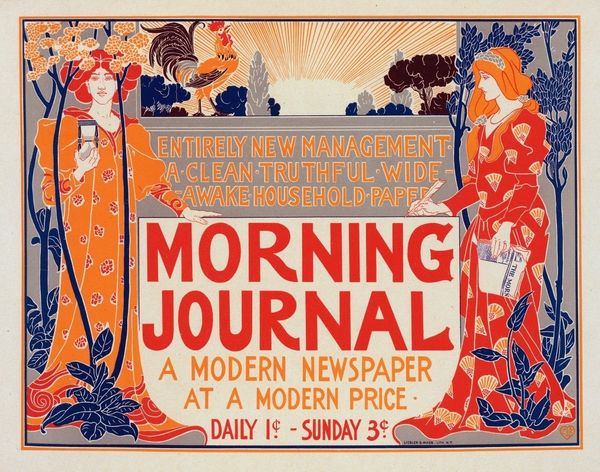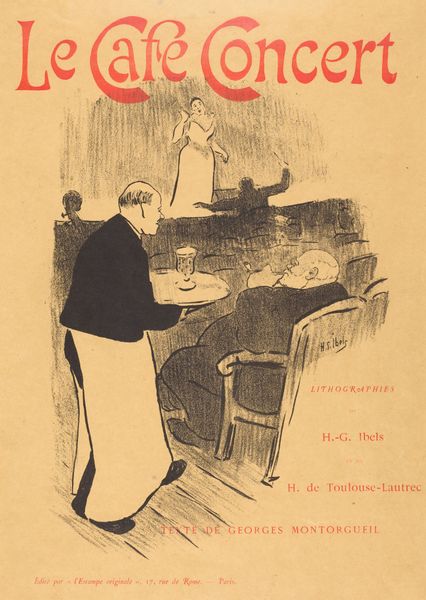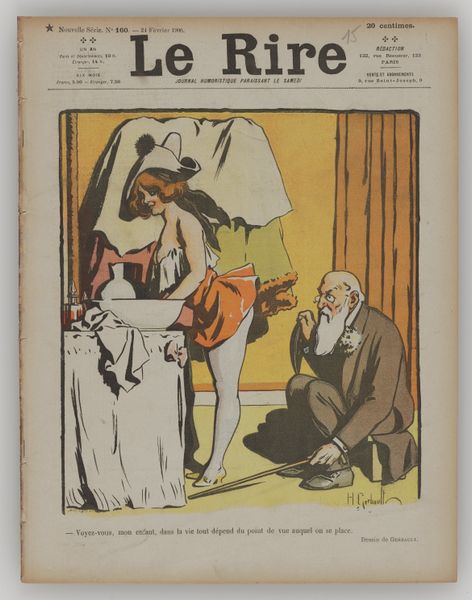
Advertisement for Philadelphia Sunday Press: April 7, 1896 1891 - 1901
0:00
0:00
drawing, print, poster
#
drawing
#
art-nouveau
#
cartoon based
# print
#
caricature
#
genre-painting
#
cartoon style
#
poster
Dimensions: Sheet: 20 1/4 × 13 11/16 in. (51.4 × 34.8 cm)
Copyright: Public Domain
Curator: Looking at "Advertisement for Philadelphia Sunday Press: April 7, 1896" by George Reiter Brill, what strikes you most? Editor: Definitely the feeling of unease. There’s something about the combination of the childish clown figure and the shadowy umbrella that casts a strange pallor over the whole image. What's your take? Curator: I see it as a fascinating document of late 19th-century American culture and print advertising. It's a color print and drawing, an example of the Art Nouveau style applied to mass media, aiming to capture attention through caricature. I think understanding its role is vital. Editor: Absolutely. It reflects the societal attitudes and values being projected through the media at that time. Is the use of a clown as the central figure a playful nod to readers or something darker? Does it perpetuate a power dynamic? Curator: It's interesting that you bring up power dynamics. Historically, advertising in the late 1800s began incorporating recognizable figures – clowns, in this instance - to gain consumer trust in the brand. What were some of the key debates around representation when this print first circulated? Editor: Debates definitely focused on the ways advertisements exploited marginalized identities and perpetuated stereotypes. The clown’s race isn't obvious. But the very choice to put on a “mask”, points to deeper questions about authenticity, mimicry, and the exploitation of vulnerability. Curator: The list of articles, such as “Is Philadelphia a Metropolis?” or “Babies with Golden Spoons,” certainly speak to the era’s interests and concerns about class and social mobility, and prompt discussion of the role of newspapers in shaping civic identity. Editor: Right! Reading those titles reveals so much about anxieties of the period—social hierarchies, colonial desires with articles like “The Gates of Pekin". You could discuss how it speaks to cultural tensions of the time period. Curator: And consider the implications for the readers consuming this imagery. The use of vibrant colors surely adds to its appeal. Ultimately, it provides us with a glimpse into the political, economic and aesthetic conditions of that time. Editor: Yes, even on a seemingly lighthearted piece, interrogating visual media can become an entry point into really thorny and important conversations. What began with a disconcerting image takes a really nuanced turn when we contextualize the imagery through the lens of representation.
Comments
No comments
Be the first to comment and join the conversation on the ultimate creative platform.
